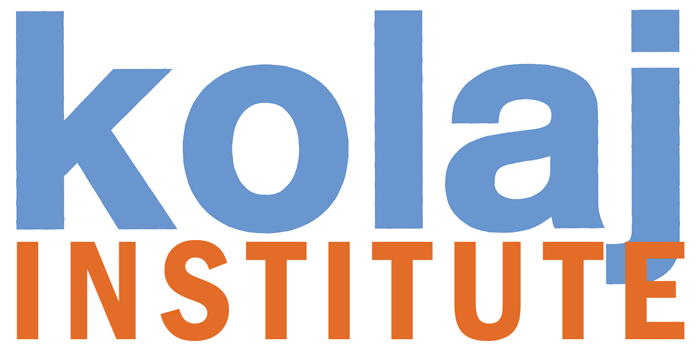“The Dancing Pixel” presents eleven animated GIFs by an equal number of artists each of which offers a point of departure for a deeper understanding of this curious cultural output. The exhibition is intended to deepen our understanding of Animated GIFs and Collage in Motion, generally. We offer these artworks as a starting point. A place to debate and discuss both the technology and the art form and, hopefully, to inspire artists to consider where this medium fits into their larger practice.
EXHIBITION INTRODUCTION
In 1989, CompuServe released a new version of its bitmap image format. Called 89a, this new format allowed images to be animated. Early GIFs gave us cheesy rolling “Under Construction” signs on AOL pages and pixelated dancing bananas announcing Peanut Butter Jelly Times. In decades since then, GIFs have matured into a sophisticated and recognized art form, some of the best of which uses collage as its technique and genre. (For a deeper history of GIFs, see Lorraine Boissoneault’s 2017 article in Smithsonian Magazine.)
For the artworks in this exhibition, we accepted both animated GIFs and MP4 and MOV files and are presenting them re-rendered as animated GIFs, looping, without sound. This exhibition is eclectic. On view here are works that are pieces of larger projects while others are single gestures. We took an expansive and inclusive approach to collage, where animated analogue cut and paste works sit beside wholly digital endeavors.
Technically, a GIF is a type of technology, a file format to be precise, where the data is encoded in a particular way so that it may be read and expressed on different platforms. GIFs do not have sound. Colloquially, a GIF refers to any moving, looping image, often found online. In reality, while some artists are making traditional GIFs, more likely than not, they are creating short films using MP4 or MOV. These are digital container files that hold video, audio, text, etc. in a single file. A collage stop motion artwork, for example, can be created as an animated GIF or an MP4/MOV file without sound and they will be experienced in the same way to a viewer who may not know the difference unless they download and inspect the file. The difference is significant as a GIF is historically experienced looping without sound, whereas an MP4 or MOV has a start and end point and the potential for sound, titles, etc. and is therefore, possibly, a film. A GIF is a proto-film: It can tell a story, but it can also be non-linear in the way that saying a word is non-linear, but a sentence has beginning and end and is therefore a story. GIFs are not stories, they are moments, like a poem. Or at least, this is an emerging critical framework with which we are considering these artworks.
The goal of this exhibition is to deepen our understanding of Animated GIFs and Collage in Motion, generally. We offer these artworks as a starting point. A place to debate and discuss both the technology and the art form and hopefully to inspire artists to consider where this medium fits into their larger practice.
For some artists, GIF making is a way to experiment and introduce motion into their collage works. For others, GIF making is a by-product of their animation or filmmaking practice. And for others, the endeavor is a playful way to share and engage with others on social media. Some artists have adapted their practice to the short attention spans fast scrolling on social media encourages while others are thinking about how these works may exist on a gallery wall or projected at a festival. Some work to maintain a sense of analog materiality while others are embracing and working entirely in digital space. Unsurprisingly artificial intelligence and NFTs make an appearance. We find all of these approaches valid points on an expansive map of this terrain; a land we have not entirely made sense of. As such, we consider this exhibition a starting, not end, point for critical investigation and we welcome writers and curators who wish to contribute to be in touch. In the coming years, we hope to learn more about the history of animated GIFS, their role in culture, and how they are diffused into the cultural ecosystem and ultimately our cultural diets.
—Ric Kasini Kadour
Technical Note: Some of the image file below are quite large. Depending on how you are connecting to the internet, they may need a longer moment than usual to appear.
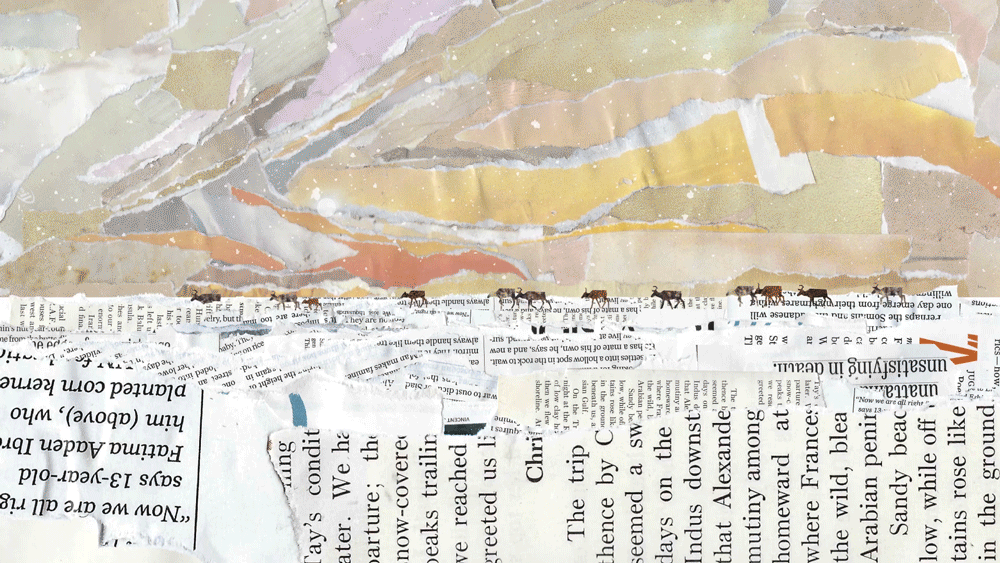
Karson Schenk
Providence, Rhode Island, USA
Caribou
(digital animation of paper fragments; 2024)
Karson Schenk got into animated GIFs because she wanted to show movement in her analog collage work. Caribou shows us a soft winter landscape where snow falls on an icy field of torn paper as a line of reindeer follow one another in the distance; a still collage brought to life. Schenk explained her process, “I use torn magazines to create my collage works. It all starts as physical paper collages that I scan and upload to my computer. I animate using After Effects, isolating different layers of paper and moving them at different speeds to create an illusion of depth. The frame-by-frame animation is created using animated masks with scanned paper moving within them.”
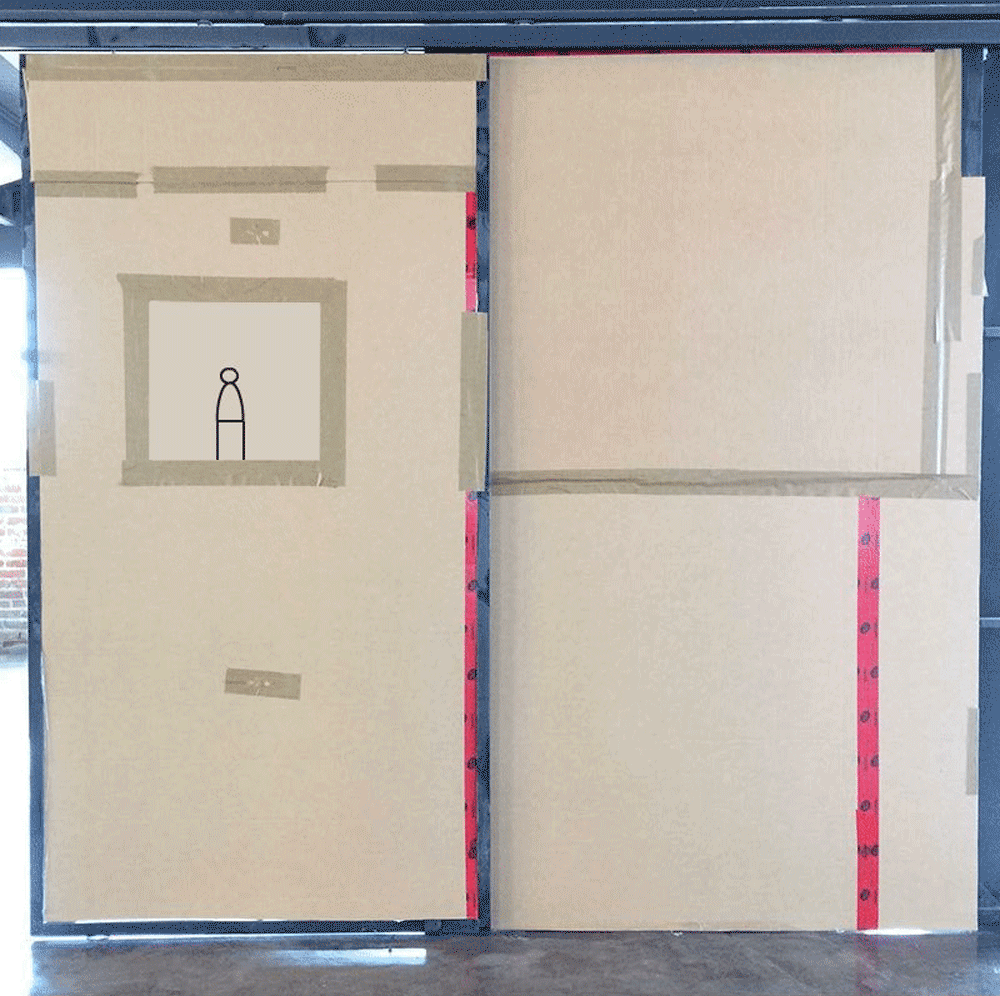
Jody Zellen
Santa Monica, California, USA
Box Wall
(digital animation, 2021)
A photograph of a cardboard wall becomes the site for a collection of animated stick figures to move around. They ascend and descend; they float in the fields defined by packing tape. A large figure passes in front of them as if they were artworks in a gallery. Jody Zellen uses technology as both a process and medium. She has been making GIFs since the late 1990s and “finds them a perfect way to add movement to my images. They range from simple to complex.” Her artist statement reads, “Through her multidisciplinary practice, which encompasses drawing, painting, photography, animation, augmented reality, digital art, interactive installations, as well as public interventions, Jody Zellen aims to challenge traditional notions of art and foster meaningful dialogues within the contemporary cultural landscape. Through these various mediums she explores the intersection of technology and human experiences. She is interested in exploring the boundaries of what art can be and how it can be experienced. By utilizing technology as a tool for creative expression, she hopes to inspire and engage audiences, fostering a deeper understanding among other things, of social media in the digital age and our place within it. Ultimately, her goal is to create conversations and connections that resonate far beyond the confines of a gallery space.”
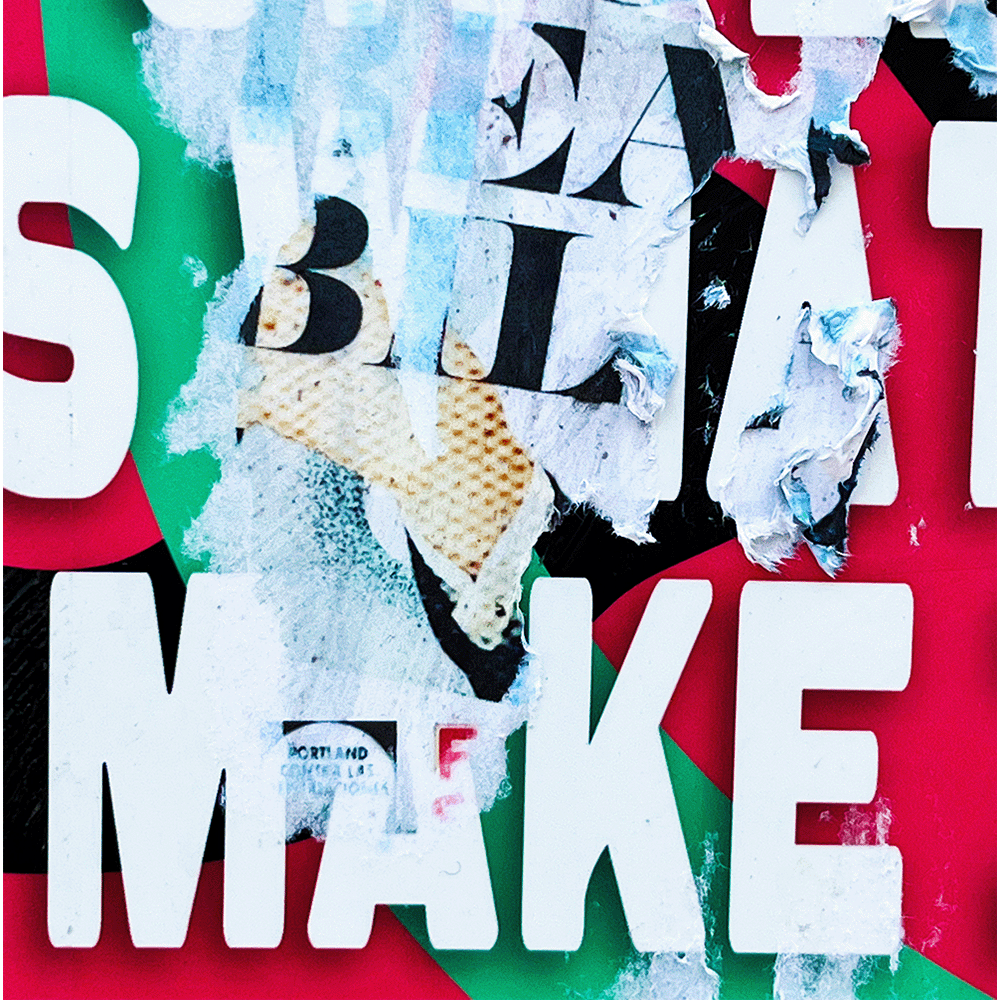
Clive Knights
Portland, Oregon, USA
MAKE
(animated analogue collage; 2025)
Clive Knights’s MAKE is a simple, four-frame, analogue collage set in motion by turning it ninety degrees. It is one of the first animated gifs made by the venerable collage artist who wanted to “answer the call and learn a new technique in the process.” But the simplicity of MAKE allows us to consider how the impact the small gesture of motion has on an artwork. Three ideas: All motion is dance. Motion is not possible without time. Time is not possible without death. Knights connects these ideas in a forthcoming essay in Kolaj Magazine that was originally presented at Kolaj Fest New Orleans 2025. He writes, “It’s no coincidence that all cultures have made, and continue to make, art in celebration of death, the ultimate horizon, perhaps the most compelling in the multitude of horizons that permeate and delineate the nature of human experience. It is also no coincidence that across cultures the mode of art most commonly associated with the event of death is dance, and its corollary, ritual. Here, death and all its attendant meanings are figured in the collective, ecstatic movement of the human body. We see death as a dance, or as a ritual performance, but most importantly, as something that it is not, made possible by the potency of figuration, by the metaphoric shift that enables us to misrecognize something as something else, the dancing human body as the unfathomable mystery of death.”

Malwina Chabocka
The Hague, Netherlands
Fly on the windscreen: Clocks
(animated digital collage, 2019)
For Malwina Chabocka, GIFs are a by-product of larger projects. She approaches art as a painter whose practice extends into animation. This is where collage comes in. Clocks is a fragment of the music video, Fly on the Windscreen. “While painting forms the core of my practice, I also create motion-based works that blend hand-drawn images, manipulated photographs, and video fragments. These often take the form of short animated loops or GIFs, which I see as intimate moving sketches–fragments of emotional rhythm, gesture, or texture. In my work, I’m interested in the subtle tension between instinct and control, precision and chance. Whether I’m standing at the easel or working with layers of digital material, I aim to make space for ambiguity, for the unspoken and the repressed–aspects of ourselves that often remain hidden beneath the surface of social performance.” She explained the role the GIF making plays in her practice, “Some GIFs are distilled directly from these projects, using short mp4 clips or sequences of still jpgs. Others are by-products of experimentation–fragments, loops, or visual ideas that didn’t make it into the final piece but took on a life of their own. I enjoy how GIFs offer a kind of intimate, self-contained movement–a way of capturing something fleeting, repetitive, or hypnotic. They allow me to explore rhythm, emotion, and gesture outside the frame of a finished film, and often open up unexpected creative directions.”

Mark Vargo
Colusa, California, USA
Generations Of: Untitled Heart
(custom trained AI model trained with hundreds of images of my paper collage, stop motion animation software; 2024)
Mark Vargo “blends the use of traditional art methods with collaborative AI.” He states his current body of work “seeks to push the bounds of traditional paper collage, by combining analog methods of collage with unexpected materials and new technology, such as 3-D printing and artificial intelligence.” Generations Of: Untitled Heart is part of a series of works Vargo made by training an AI model with hundreds of images of his paper collage. Each of the results forms a frame of his animated GIF. These artworks are shown online and on screens in galleries. Vargo’s digital collage work has also been projected onto buildings as part of festivals. He hopes to develop these works so that they can be shown in more immersive environments in the future including in 360 projection spaces. He wrote, “I make animated GIFs to challenge and push the bounds of what is considered collage. By using animation, I can create dynamic forms that express the possibility of collage and create immersive and emotive forms. I collaborate with a custom-trained artificial intelligence model which I have crafted to create images in the style of my paper collage artwork. This allows me to make endless variations of images in my style, which lends itself to creating unique and dynamic animations including GIFs and longform animated videos.”
Note: For size reasons, we are only showing a selection of 30 frames from the total 658 frame file.
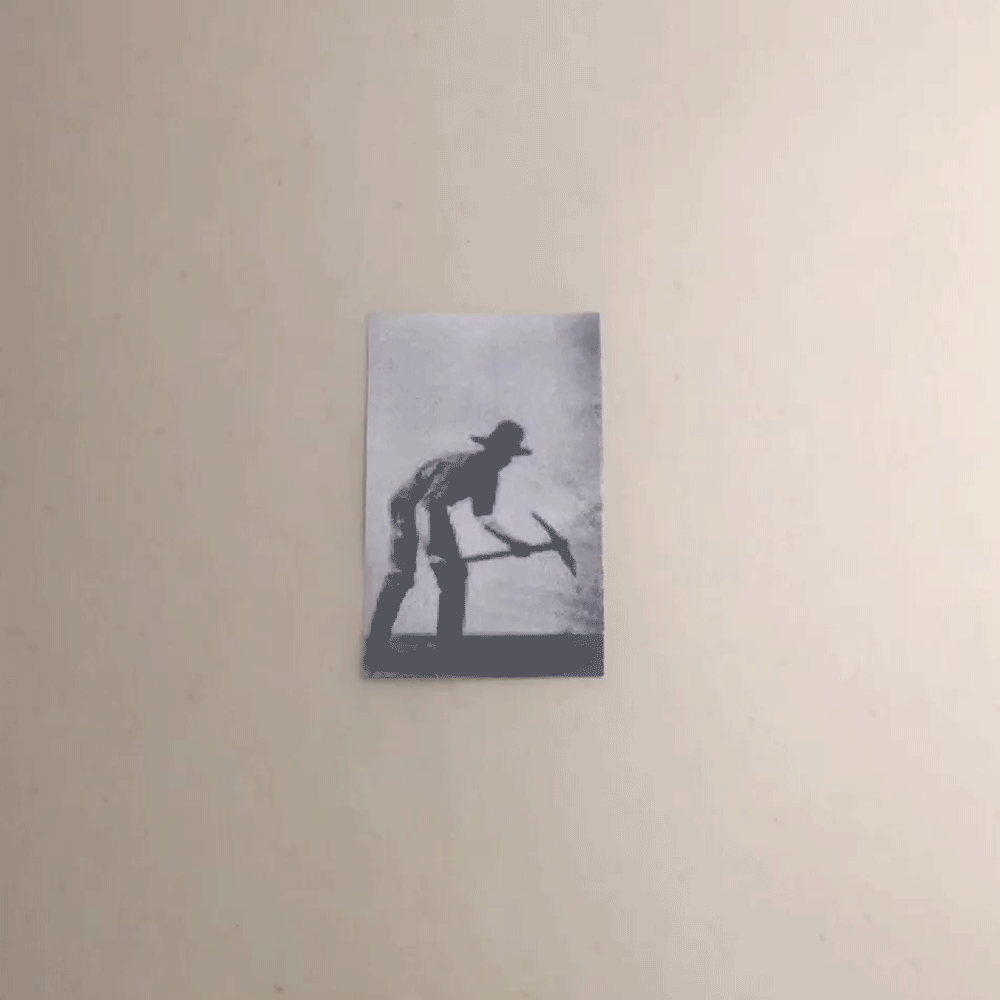
Paulina Laura Alonso
Buenos Aires, Argentina
Stone Breaker
(stop motion analogue collage; 2021)
The artwork of Paulina Laura Alonso is informed by the artist’s dual training as both a cultural conservator and a collage artist. “Each fragment is treated as both material and narrative. Through layering and recontextualization, she creates works that question visual hierarchies and suggest new meanings. Her practice spans exhibitions, publications, and collaborative projects, emphasizing the transformative potential of the image.” She wrote, “I don’t treat paper just as a background, but as a stage–an active space where elements unfold, bend, or emerge to create depth and movement. I think of my works as photographs that have escaped their frozen moment. I’m interested in reactivating what looks still, giving movement back to what was once static.” Against this backdrop, the short stopmotion, Stone Breaker, can be seen as an expression of what it feels like to overwork a collage. She wrote, “a stone breaker pushes so hard he breaks through the surface of the paper, cutting across its layers.”
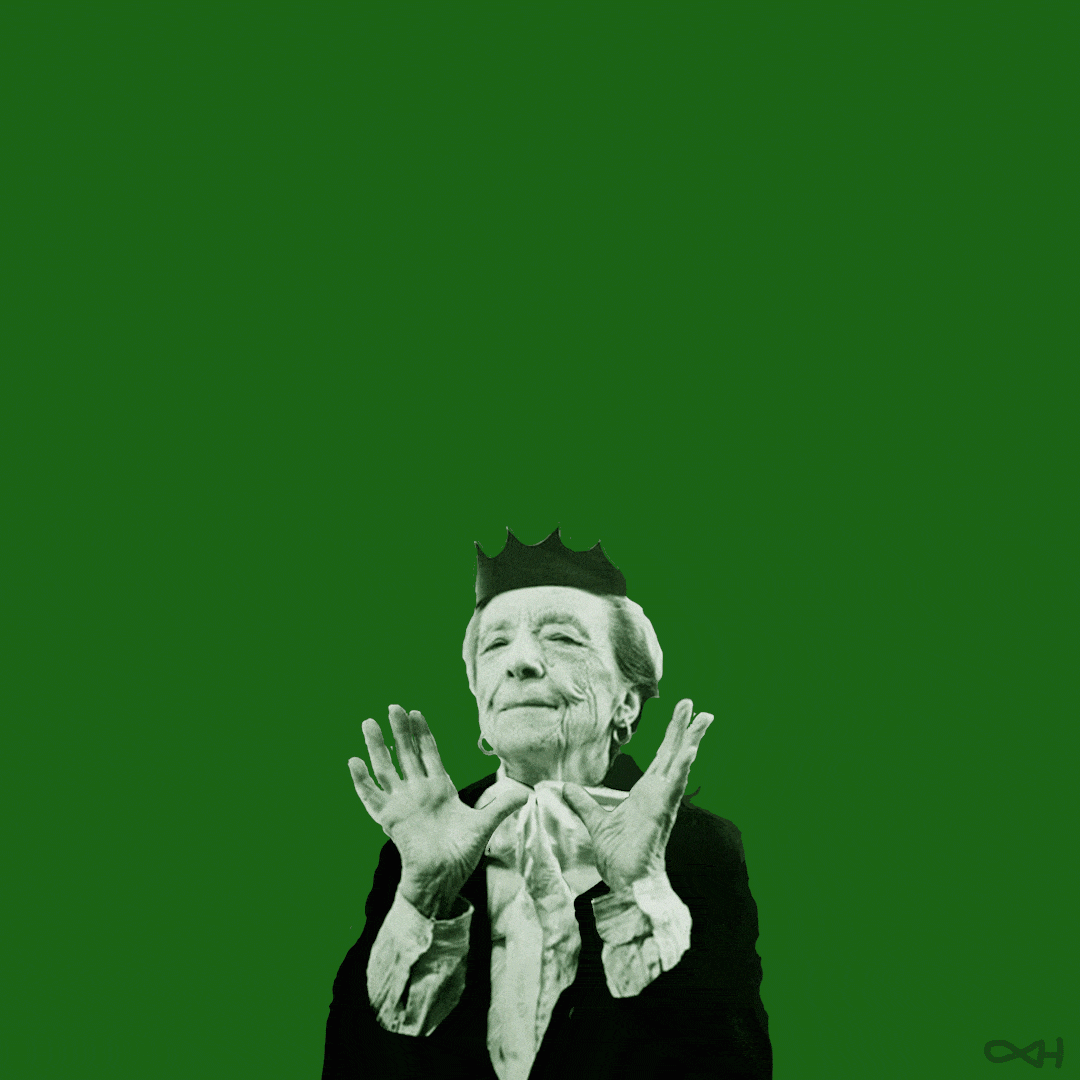
Gunzi Holmström
Helsinki, Finland
Hommage à Louise Bourgeois
(digital animation, 2022)
Gunzi Holmström is an accomplished visual and video artist whose recent work included public art commissions of a bronze sculpture and sound installation that used the impulses from trees and fungus underground. She routinely incorporates animation in her freelance work and art videos and teaches stop motion animation to adults and children. Hommage à Louise Bourgeois is part of a series of animated collage that reference “art or other aspects of artists–that have inspired me during the years.” She wrote, “I wanted to express something about these artists’ spiritual starting points.” In this work, the French sculptor sets free a spider, which is promptly eaten by a giant mouth. The GIF was originally exhibited in 2022 by Leap Gallery, a Stockholm-based “curated project space for digital art” that was experimenting with NFTs. The collection of eleven animations was part of the exhibition, ”And then the hare got drunk,” a reference to Joseph Beuys and his 1965 performance piece, How to explain pictures to a dead hare.
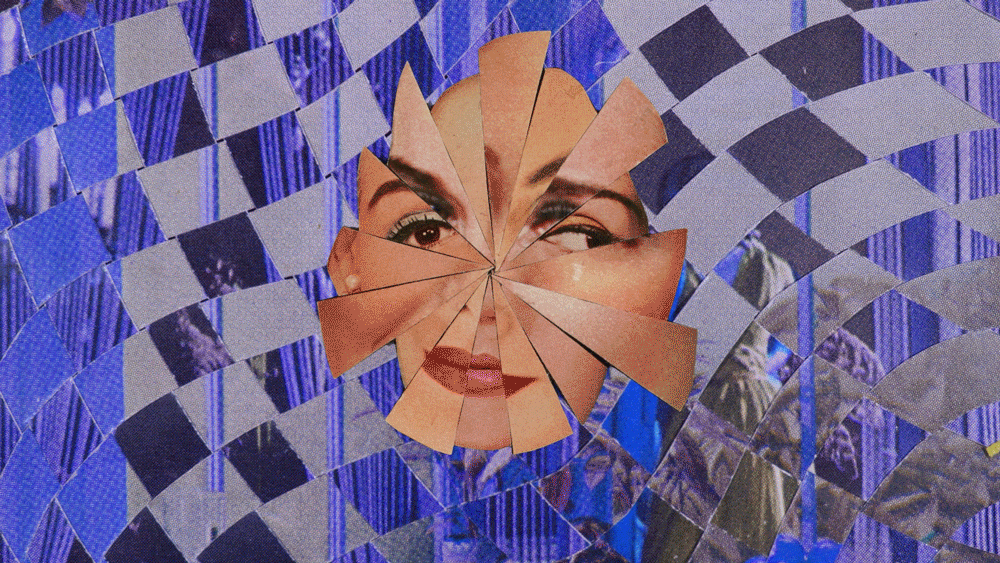
Lisa Barcy
Chicago, Illinois, USA
Faces 1
(digital animation of paper fragments; 2022)
Lisa Barcy’s practice “is stubbornly rooted in physical materials, exuberant color, and happy accidents as an antidote to our increasingly digital world where verisimilitude is often a holy grail.” She wrote, “Beginning with found materials, I relish engaging with materials on a highly tactile level, improvising until the materials congeal and tell me what the piece wants to be. I feel like they develop their own rules, and I’m just there to glue them in place. Depending on the medium, I sometimes employ digital means of manipulation, attempting to blur the lines between the tangible and the ephemeral.” Making a film, even a short one, is a long-term commitment to focusing on a single project. She wrote, “being able to create something in one day is often a welcome break from having to focus on a single project for months. GIFs are short pieces that allow me to blow off steam, play with materials, and explore unconscious themes that might emerge during the process of experimentation.” Faces 1 is an example of Barcy’s playful use of materials.
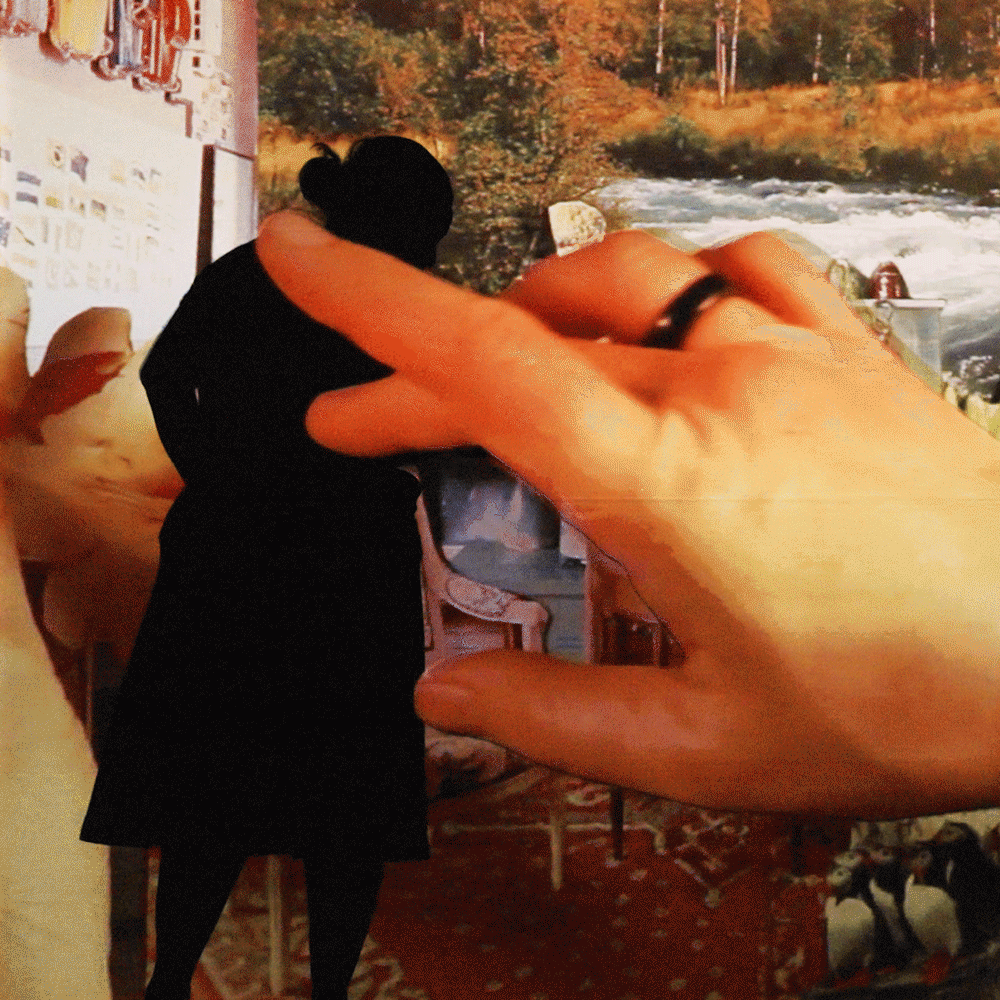
Miwa Matreyek
Vancouver, British Columbia, Canada
GIF from the Collage & Shadow Demo film
(video documentation of live performance; 2016)
Miwa Matreyek’s typical artwork is “live, staged performances where she interacts with her animations as a shadow silhouette, at the intersection of cinematic and theatrical, fantastical and tangible, illusionistic and physical.” She wrote, “My work is centered around combining the ephemeral (projected animations) and the physical (bodies, space, materials), and playing with the magical slipping point where magic happens in a moment of liveness. Even though I consider myself an animation and moving-image maker first and foremost, much of my work exists in a theatrical context.” Animated GIFs are not a large part of her practice, but the example here is one which illustrates how the medium can be used to document and share one’s artwork.
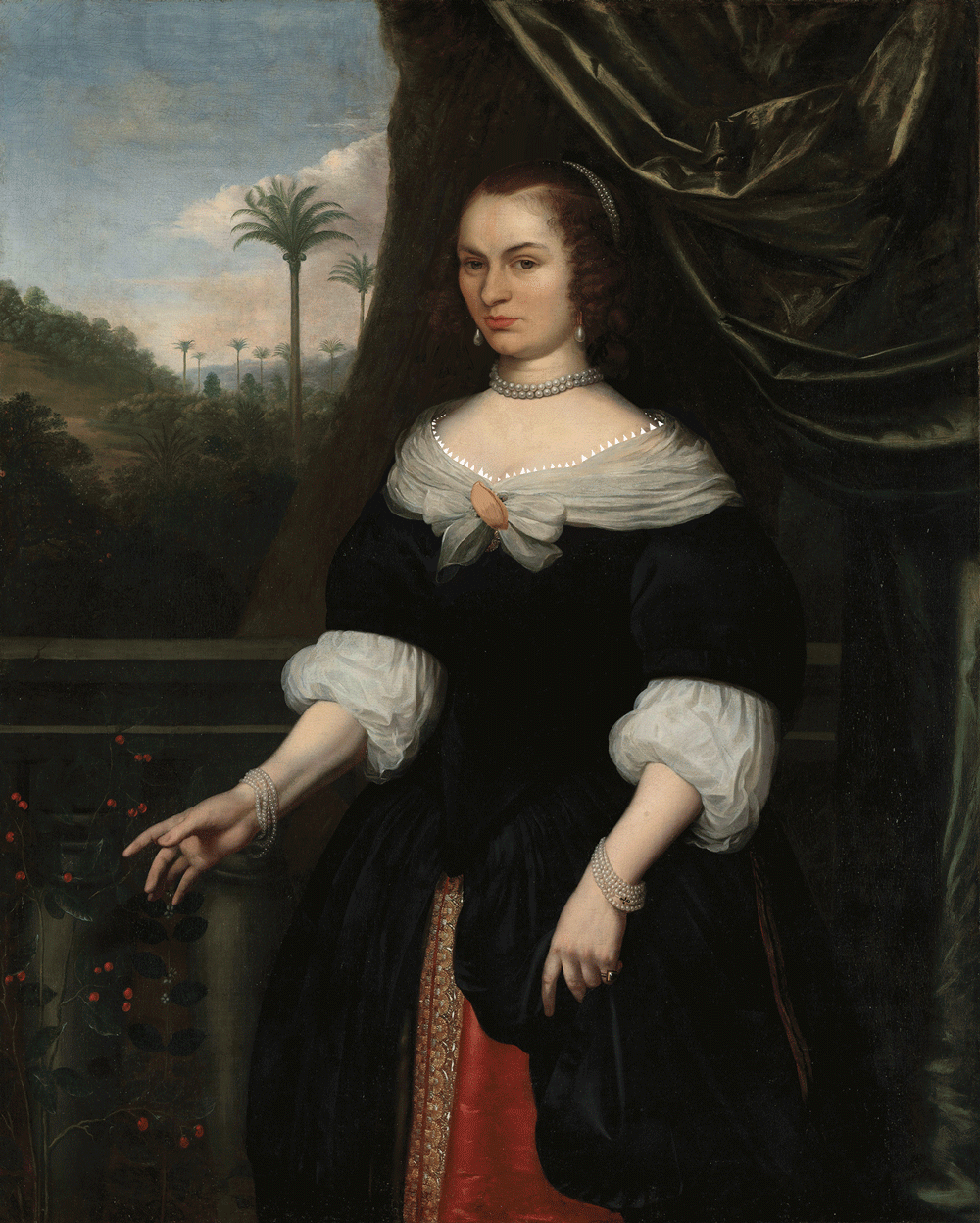
Nisha Alberti
Edinburgh, Scotland, United Kingdom
Murderous Clothes: Shawl
(animated digital collage and drawing; 2020)
For the “Murderous Clothes” series, Dutch collage artist Nisha Alberti pulled examples of historic portraits from European or Rijksmuseum websites and then animated the clothing to eat the heads of their subjects. They are playful, short works operating at the intersection of horror and comedy. Alberti wrote, “My art practice focuses on reusing and recycling existing images to make something new and unexpected. For my digital collages my sources are always images in the public domain. I toy with the idea of transposing the trend of reduce/reuse/recycle to the art world: there’s so much art in the world already, should we not do more with the resources we have? By mixing up images I reimagine what’s been done before and produce something new and exciting yet 99% recycled and made up of old stuff.” The use of motion allows Alberti to expand the storytelling power of her artwork. “Some images tell a story, but the image can only tell you the beginning. An animated GIF lets you complete the story with a middle and an end.”
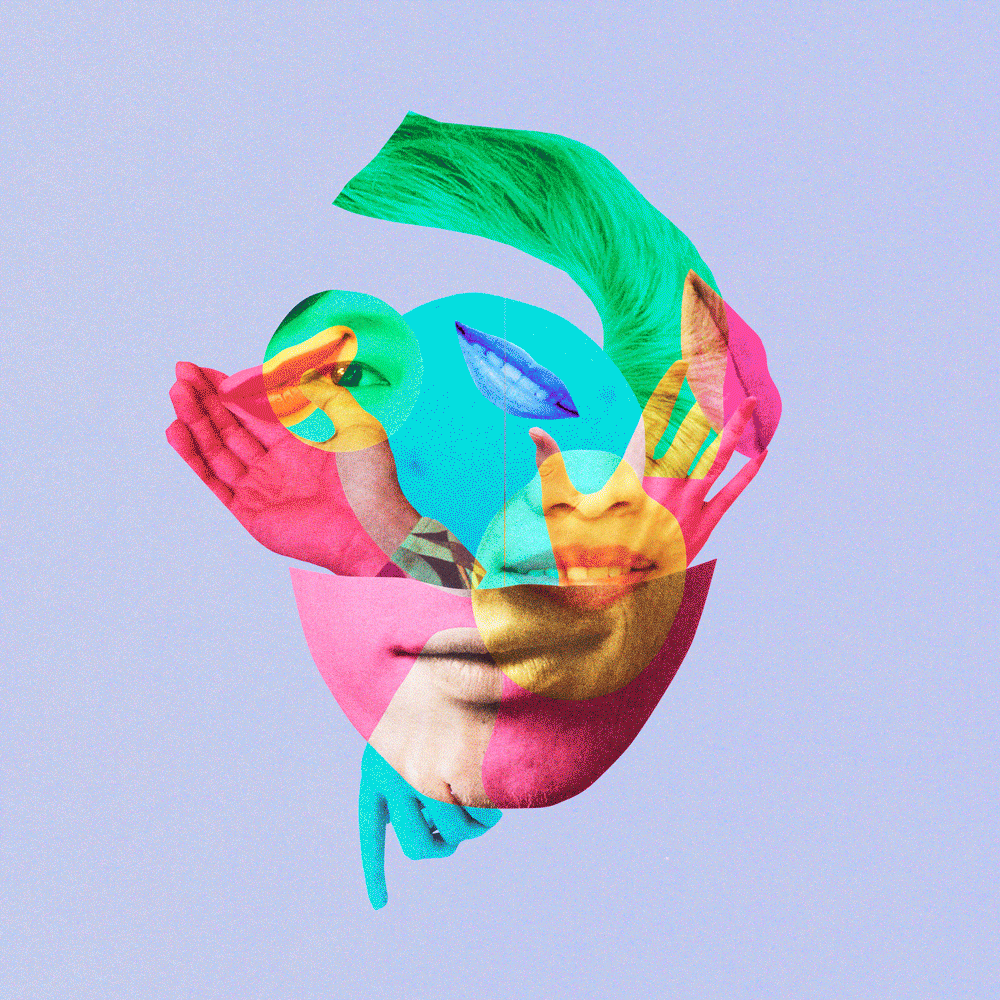
Katarina Marinic
Dartmouth, Nova Scotia, Canada
Virtual Crossing: Spin
(animated digital collage, 2021)
Katarina Marinic “started to experiment with gifs as a way to challenge and develop my skills, but to also allow for the image to be fluid and not be fixed. The ability to show movement with photographs opened up a lot more creativity and conceptual thinking.” Her practice “is rooted in the constructed and manipulated image. Inspired by the historic tradition of photomontage, she creates collages with found photographs to express artistic ideas and critical perspectives. Her work plays with color and texture, using analog and digital techniques to compose both still and moving images.” The “Virtual Crossing” series exemplifies her “experimental approach to image making using both analog and digital techniques to create a composite image,” She wrote, “I often appropriate photographs from various sources such as magazines and online image galleries, and sometimes use my own original photography. I create manually using a variety of printed images which are cut out, assembled into a composition, and then scanned. I isolate individual parts of the image to digitally add color, alter tone and contrast, and layer texture. Sometimes the individual elements are animated into a short moving image.” Marinic tailors these animations for online viewing, however she has exhibited longer versions in galleries and as large scale projections as part of media festivals.
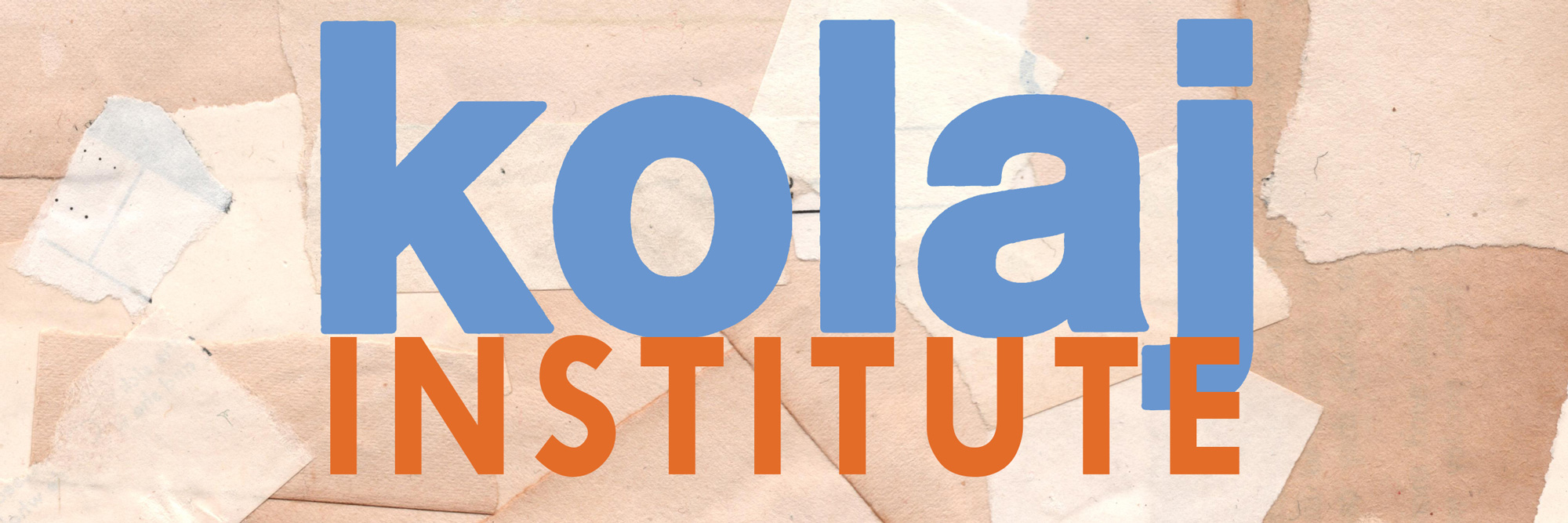
ABOUT KOLAJ INSTITUTE
The mission of Kolaj Institute is to support artists, curators, and writers who seek to study, document, and disseminate ideas that deepen our understanding of collage as a medium, a genre, a community, and a 21st century movement. We operate a number of initiatives meant to bring together community, investigate critical issues, and raise collage’s standing in the art world. Kolaj Institute is a 501c3 Non-profit organization registered in the State of Louisiana, USA. LEARN MORE
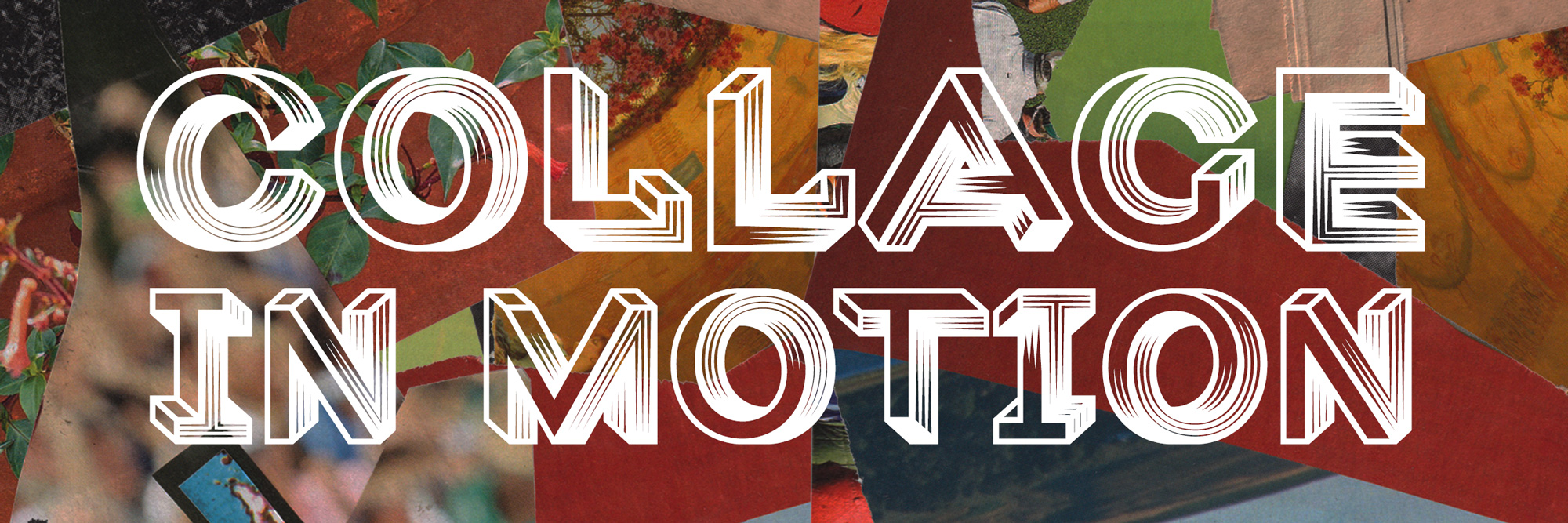
ABOUT THE COLLAGE IN MOTION PROJECT
The Collage in Motion project explores collage and the moving image, a broad, loosely defined category that includes animations, film cut-ups, collage film, stop-motion, documentaries about collage artists, and other forms of media in which collage—as medium or genre—is present. The project manifests as articles in Kolaj Magazine, an online directory, workshops, residencies, and screenings. Artists with a practice of Collage in Motion are encouraged to submit to the online directory. LEARN MORE
